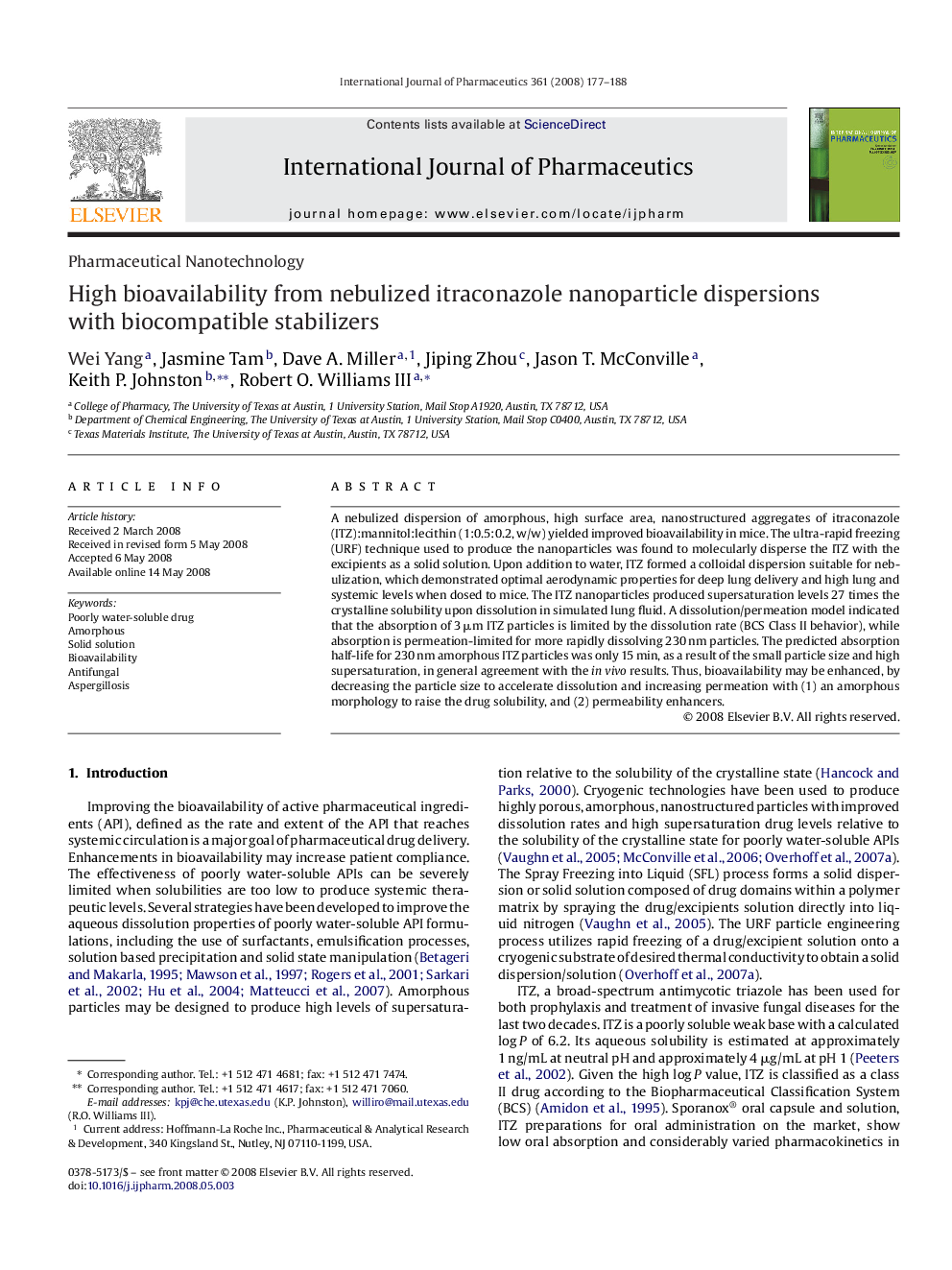| Article ID | Journal | Published Year | Pages | File Type |
|---|---|---|---|---|
| 2505252 | International Journal of Pharmaceutics | 2008 | 12 Pages |
A nebulized dispersion of amorphous, high surface area, nanostructured aggregates of itraconazole (ITZ):mannitol:lecithin (1:0.5:0.2, w/w) yielded improved bioavailability in mice. The ultra-rapid freezing (URF) technique used to produce the nanoparticles was found to molecularly disperse the ITZ with the excipients as a solid solution. Upon addition to water, ITZ formed a colloidal dispersion suitable for nebulization, which demonstrated optimal aerodynamic properties for deep lung delivery and high lung and systemic levels when dosed to mice. The ITZ nanoparticles produced supersaturation levels 27 times the crystalline solubility upon dissolution in simulated lung fluid. A dissolution/permeation model indicated that the absorption of 3 μm ITZ particles is limited by the dissolution rate (BCS Class II behavior), while absorption is permeation-limited for more rapidly dissolving 230 nm particles. The predicted absorption half-life for 230 nm amorphous ITZ particles was only 15 min, as a result of the small particle size and high supersaturation, in general agreement with the in vivo results. Thus, bioavailability may be enhanced, by decreasing the particle size to accelerate dissolution and increasing permeation with (1) an amorphous morphology to raise the drug solubility, and (2) permeability enhancers.
